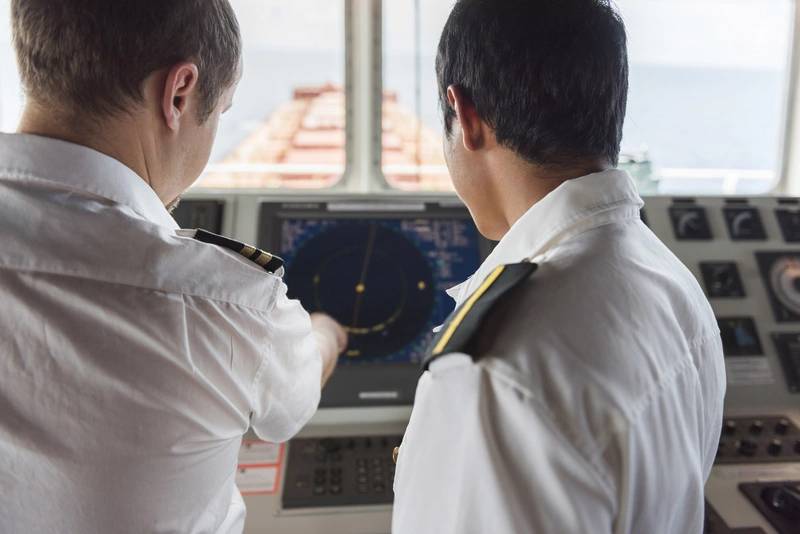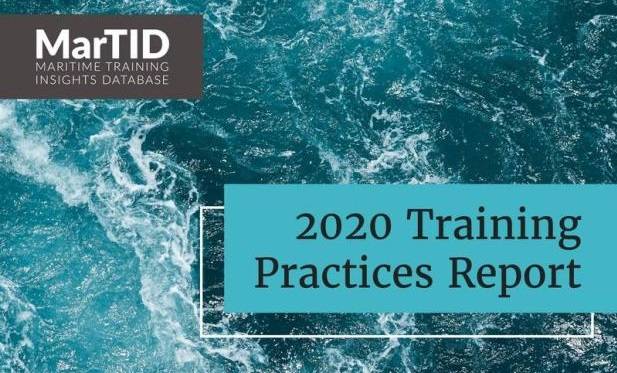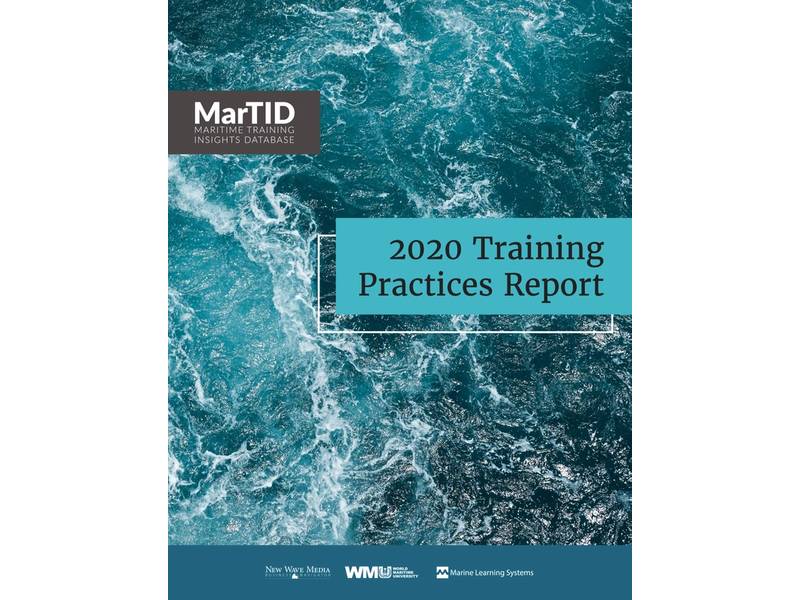MarTID 2020: Maritime Training Budgets Continue to Rise
Training budgets for seafarers continue to rise around the world, and seafarers themselves increasingly are paying the price, according to the MarTID 2020 Training Practices Report.
Responses (278) to the 2020 MarTID report, the third in the series, rose 60% versus 2019, and again included insights from seafarers (accounting for 53% of the response), vessel operators (24%) and METIs (23%).
The survey for MarTID 2020 was concluding just as COVID-19 was starting to spread rapidly, so the full scope of the pandemic’s impact on the global economy did not have a significant impact on this year’s report results. But it would be remiss to not look at maritime training through a COVID-19 lens, as every industry and walk of life is viewed today through this same lens, particularly with the serious impact the pandemic has had, and continues to have, on the world’s seafarers.
"Seafarers continue to serve the global community as facilitators of a key link in the global logistics chain, particularly when the challenging events of the 2020 COVID pandemic are considered,” wrote Cleopatra Doumbia-Henry, President, World Maritime University, in the Preface for the MarTID 2020 Training Practices Report. “In all the chaos, and sadly also with the alarming absence of proper and appropriate treatment of seafarers in many jurisdictions, the technical work of seafarers, by and large, keeps the global economy moving. Their competence, development, knowledge and skill retention and transfer to actual work settings is as critical as ever. Training needs to be kept in focus."
According to the International Chamber of Shipping (ICS), as of July 23, 2020, there were more than a half a million seafarers (out of nearly 1.7 million seafarers globally) impacted by the ongoing crew change crisis, with “over 250,000 seafarers trapped at sea.” The Black Swan event undoubtedly will color the results of the 2021 MarTID report: "With challenge, comes opportunity. With many traditional places of learning closed so as to minimize human interaction and the need for travel, the drive for innovation has never been stronger,” wrote Captain John Lloyd, RD MBA FNI CMMar, Chief Executive Officer, The Nautical Institute, in the Foreward to the MarTID 2020 report. “Those organizations with a solid foundation in flexible and remote learning found themselves well placed to address the market need in these circumstances. Others had to respond quickly with new training solutions."
The full effects of COVID-19 on maritime training will not be realized for but until then, here are some of the significant findings from the 2020 report.

Maritime Training Budgets Rise (again)
Training budgets have been rising for vessel operators and the trend is expected to continue into the future. 84% of vessel operators spent under 10% of their operating budget on training, with roughly two-thirds spending between 2% and 10%. Compared to the previous surveys, the reported training budgets are trending upwards. Nearly 60% of operators have seen an increase in their training budget over the previous year. Looking at METIs, an average of two thirds of a METIs’ overall operating budget is spent on training activities and equipment, an increase of 14.5% over the 2019 MarTID survey, where the average was a little over half at 53.3%.
In-Person vs. Online
Taking deeper dive into how training budgets are spent, vessel operators report that face-to-face classroom training remains the most heavily used training method. At 84%, face-to-face classroom training is used more than internet-based e-learning, the second most used training method, which 76% of operators indicate is used to a high or medium degree.
But the tide is changing, as this year’s report found that 16% have reduced face-to-face training over the last year; and 23% expect to use less of it in the coming year. In contrast, in regards to internet-based e-learning, 65% of respondents indicated increased usage over the last 12 months, and 84% anticipate increased usage over the coming 12 months.
While the balance between face-to-face instruction and internet-based e-learning is more weighted toward in-person training at METIs than at operators, the trend toward increased use of internet-based e-learning appears almost as large, as the MarTID 2020 report show that 56% of responding METIs indicate an increased use of internet-based e-learning in the past 12 months and 69% anticipate an increase in the coming 12 months.
Though it is not reflected statistically in the 2020 report, the evolution of face-to-face training versus e-Learning will be a fascinating one to watch in the coming years as the full effects of COVID-19 are realized. One consistent throughout: primary training drivers remain increased safety and accident reduction.
MarTID 2020 also surveys operators on the use of tools and systems in training operations. For some, a single system manages all three (training, assessment and competency), while for others, a combination of software, forms and online tools are used. Technology, as is clearly illustrated, will increasingly play a role in the future.
Seafarers Increasingly Pay for their Own Training
In step with operators and METIs rising budgets, the cost for training to seafarers continues to rise as well. Similar to the 2019 MarTID survey results, more seafarers rely on self-funding for their seafarer training than those who rely on their employer (roughly 43% self-funded in 2019). Most seafarers spent under 20% of their annual income on seafarer training, with roughly 17% spending anywhere from one-tenth to one-fifth of their income on training.
Nearly half of responding seafarers have seen an increase in personal training expenditures over the last five years, and more than 60% believe that they will spend even more for the upcoming year.
And what is all of this increased expenditure delivering? The answer to that is perhaps fuzzy at best, as 78% of seafarer respondents report that they work for an organization that does not assess the impact of their training on their work performance.
The most common training method experienced by seafarers is the traditional, in-person classroom, as only 14% of seafarers indicate they no longer experience this method. Not far behind are e-learning and simulation, as roughly 45% - 50% of responding seafarers encounter either a high or medium amount of simulation or e-learning in their training. Job shadowing, mentoring and coaching were the least encountered training methods."Many participants in this survey have noticed an increase in on-line training and expect this increase to continue,” wrote Captain Lloyd, CEO, The Nautical Institute, in the Foreward to the MarTID 2020 report. “There is a high level of confidence this methodology meets the industry needs and provides cost-effective solutions. For those paying their own way – the saving benefit is especially important."
The MarTID 2020 survey also asked seafarers to list training they would like to freely engage in, with relation to their career. The most common response was simulation, with more than 18% of respondents citing increased simulator training. Following that, ship handling and practical on-the-job training were the next most commonly mentioned training initiative, with 8% of respondents mentioning them.
Quantifying Quality in Training
This year’s focus theme is Quality in Training. Growing training budgets and state-of-the-art training methods and technologies are useless if training needs are not correctly identified and if outcomes are not properly assessed. The 2020 reports found that a majority of operators follow some sort of mechanism or process for training quality assurance, while every responding METI has a process or standard in place for training quality. Among respondents, about 50% of the operators and 80% of the METIs indicated that they follow an externally defined quality standard in their training operations. At the same time, seafarers perceive the quality of their company-originated training onboard to be significantly less than optimal.
Ensuring quality in training often comes down to individuals in the organization tasked in this regard. For operator respondents, 85% have a someone in charge of ensuring training quality, and the chart here indicates their level of direct report.
Continuous Improvement is at the heart of any quality processes, and training is no exception. Here the MarTID 2020 report found a stark contrast between vessel operators and METIs, with only 55 percent of vessel operators and nearly 90% of METIs following a continuous improvement program for training quality.
More than half of both METIs and operators indicated that these processes covered a wide variety of training components including instructor performance, curriculum design, assessments, outcomes and facilities.In terms of actual metrics which were used as data to inform continuous training improvement, the most common ones used by operators included safety records, job performance, and overall crew performance. A smaller but still significant number looked at trainee feedback, trainee assessment results, and fine-grained analysis of individual questions on assessments. For METIs, the three most-cited metrics were customer feedback, student assessment results and trainee feedback.
The Future of Maritime Training
The future for many industries today is unclear, and while the health, welfare and plight of the seafarer has been the mantra for many years, the importance of the seafarer as a vital cog in the wheels of global commerce has never been so apparent, particularly when nearly one-third of the world’s seafarers and their families are impacted by COVID-19.
As the MarTID Training Practices Report has confirmed for the past three years, both operators and METIs consider “reducing accidents” and “improving safety performance” to be two key drivers to maritime training. In this regard, it appears that the focus has been a success. According to the Allianz Safety & Shipping Review 20202, there were 41 total losses in 2019 – a record low – representing a 70% decline in 10 years. While total losses were down, the cumulative number of “shipping incidents” rose 5% to 2,815, with machinery damage/failure (1,044 incidents) as the top cause. Looking again at the connection between the seafarer, training and ship safety, the Allianz report stated:
“One of the biggest issues has been the inability to change crews easily because of pandemic restrictions. Relief of crew is essential in ensuring the safety, health and welfare of seafarers. Extended periods on board vessels can result in mentally and physically fatigued crew, which is known to be one of the underlying causes of human error, estimated to be a contributing factor in 75% to 96% of marine incidents.”
For free access to the full MarTID 2020 report, please visit: http://scholar.wmu.se/martid


